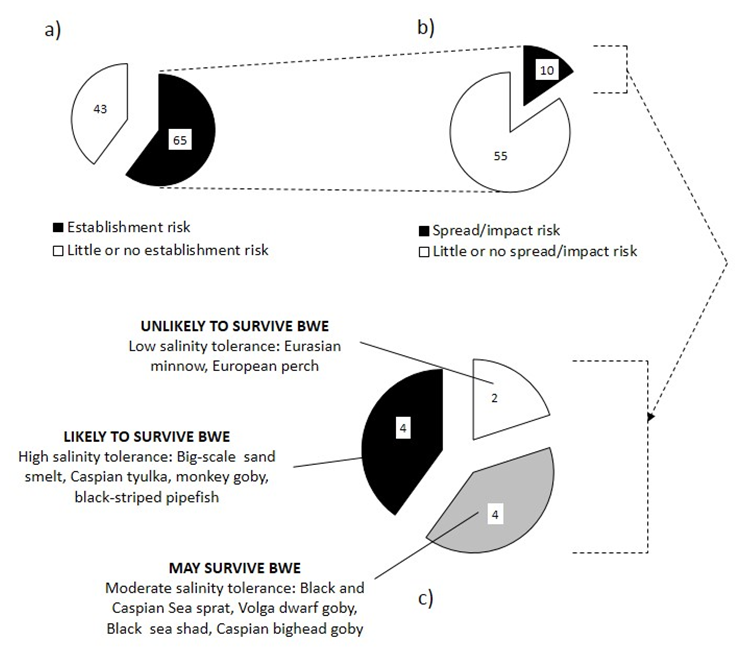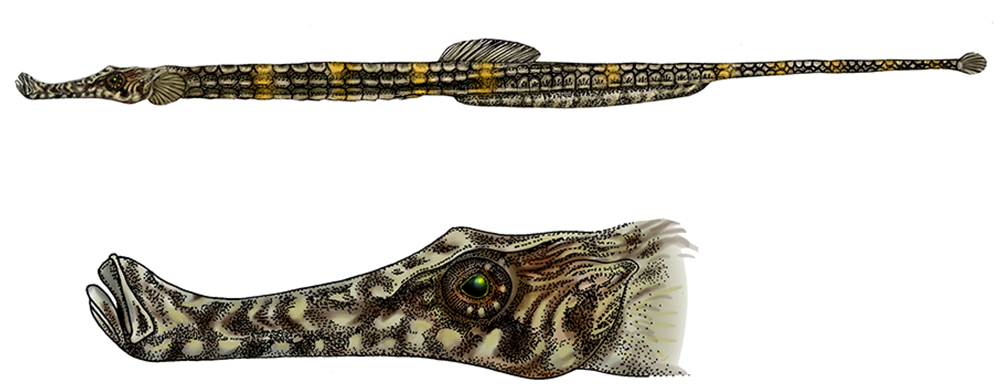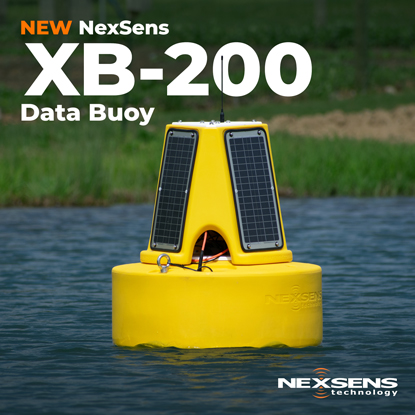Research Summary: Updated Invasion Risk Assessment For Ponto-Caspian Fishes To The Great Lakes
2A Department of Biology, SUNY Buffalo State, 1300 Elmwood Avenue, Buffalo, NY 14222, USA
B Great Lakes Center, SUNY Buffalo State, 1300 Elmwood Avenue, Buffalo, NY 14222, USA
C New York Sea Grant Extension, SUNY Oswego, Oswego, NY 13126, USA
A majority of invasive species discovered in the Great Lakes since 1985 are native to the Ponto-Caspian region of Eastern Europe (Mills et al., 1993; Ricciardi, 2006). This includes species that have had strong negative impacts in the Great Lakes such as dreissenid mussels and the round goby. The diverse fish communities of the Ponto-Caspian region coupled with a high volume of commercial shipping traffic strongly suggests that this region will continue to be a major source of invasive species to the Great Lakes. In this study we use new data obtained from European libraries and research institutes to identify Ponto-Caspian fishes that are at high risk of successfully invading and causing harm in the Great Lakes.
Methods
To assess invasion risk in Ponto-Caspian fishes that had not been included in previous studies, we reviewed English-language publications and untranslated European literature published primarily in Russian, focusing on physiological and ecological traits that have proven useful in previous risk assessments. Following the approach of Kolar and Lodge (2002), we then used discriminant analysis to identify fishes that had a high probability of becoming established, spreading, and having significant negative impacts in the Great Lakes. We also used the data we collected on salinity tolerances to determine if current ballast water regulations are likely to prevent future invasions of the Great Lakes by high-risk Ponto-Caspian fishes identified in the present study, as well as those identified previously.

Figure 1. Summary of the screening process for invasion risk and ballast water survival for Ponto-Caspian fishes to the Great Lakes. Numbers refer to the number of species included at each stage of the screening process. (Credit: Randal Snyder)
Results
The most useful traits for identifying high-risk Ponto-Caspian fishes via our statistical model included salinity tolerance, growth rate, and previous invasion history. Our updated listing of high-risk Ponto-Caspian fishes includes five species identified previously (the Black and Caspian Sea sprat, Eurasian minnow, big-scale sand smelt, European perch, and monkey goby) and five additional species (the Black sea shad, Caspian tyulka, Volga dwarf goby, Caspian bighead goby, and black-striped pipefish). Of these ten species, four (the monkey goby, big-scale sand smelt, Caspian tyulka, and black-striped pipefish) are likely to survive ballast water exchange as eggs, larvae, or adults based on salinity tolerances. The black-striped pipefish has spread rapidly throughout Europe and could cause significant ecological changes in the Great Lakes, and it is unlike anything currently found in the Great Lakes. It is a close relative of the marine seahorses and male pipefish carry their young in brood pouches.

Figure 2. The black-striped pipefish is at high risk of successfully invading the Great Lakes via ballast water introduction and may cause significant ecological harm if introduced. (Credit: Randal Snyder)
Conclusions
A key component of invasive species management is effective surveillance, as well as a rapid and coordinated response to possible invasions; this study provides information that supports both of these objectives. Our results include a database of physiological and ecological characteristics for Ponto-Caspian fishes that were poorly described in the western scientific literature, and our literature review and new statistical risk assessment has produced a list of ten species of Ponto-Caspian fishes that are at high-risk of invading the Great Lakes and causing significant harm if they are successful. This “watch list” can be used to focus surveillance and outreach activities to improve the likelihood of detecting future invasions at an early stage, when control and containment options are more likely to be successful. Our results also indicate that ballast water exchange, if carried out according to current regulations governing shipping in the Great Lakes, should reduce but not eliminate the probability of future introductions of invasive Ponto-Caspian fishes.
Full study published in the Journal of Great Lakes Research, Volume 40, No. 2, 2014, pp 360 – 369.
Selected References
- Kolar, C.S., Lodge, D.M., 2002. Ecological predictions and risk assessment for alien fishes in North America. Science 298, 1233-1236.
- Mills, E.L., Leach, J.H., Carlton, J.T., Secor, C.L., 1993. Exotic species in the Great Lakes: a history of biotic crises and anthropogenic introductions. J. Great Lakes Res. 19, 1-54.
- Ricciardi, A., 2006. Patterns of invasion in the Laurentian Great Lakes in relation to changes in vector activity. Diversity Distrib. 12, 425-433.
Featured Image: Lake Superior. (Credit: U.S. Fish and Wildlife Service – Midwest Region via Creative Commons 2.0)














[…] Groundbreaking research by scientist at Buffalo State College, translating (from Russian) and analyzing previously unpublished research on Ponto-Caspian fish species, have identified these four species among forty-two as having a high risk potential of surviving current treatment methods and successfully establishing breeding populations in our already overtaxed and reeling waterbodies. […]
[…] Even with increased regulations commercial shipping still poses a threat and opens the door for new invasive species to enter the River. And relatively new research has produced a list of ten species of eastern European fishes that are at high-risk of …. […]